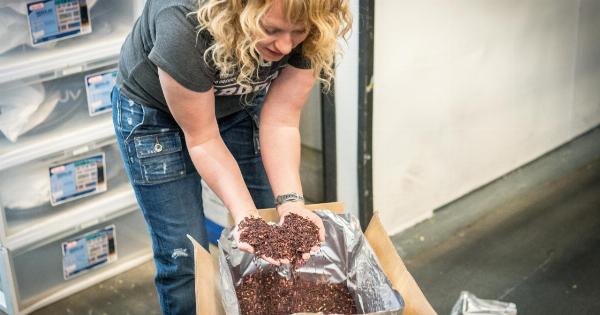Many people rely on a cup of coffee or tea to kickstart their day, but have you ever wondered what else you might be consuming along with that caffeine boost? Recent studies have revealed that microplastics, tiny particles of plastic less than 5mm in size, may be lurking in your morning brew.
The Rise of Microplastics
Microplastics have become a global environmental concern, with their presence being documented in various ecosystems including oceans, rivers, and even air.
These particles can originate from a variety of sources, such as plastic waste that degrades over time or microbeads commonly found in personal care products. While the presence of microplastics in our environment is alarming, the potential presence of these particles in something as essential as our daily cup of tea or coffee raises even more concerns.
How Microplastics End Up in Your Beverage
Several factors contribute to the contamination of microplastics in beverages. The first major source is the use of plastic packaging and equipment during the production and processing of tea leaves or coffee beans.
Plastic packaging materials, such as teabags or coffee bean bags, can shed microplastic particles during transportation, storage, or brewing. Similarly, plastic equipment used in the manufacturing process, such as filters or stirrers, can also introduce microplastics into the final product.
Additionally, microplastics can enter beverages during the brewing or steeping process. Hot water can cause the breakdown of plastic materials, leading to the release of microplastic particles.
This is especially true when using teabags that are made of plastic-based materials or have a plastic coating to enhance their strength or appearance. The act of stirring or swirling a beverage can also release small fragments of plastic from the equipment being used.
Risks and Health Implications
The consumption of microplastics through beverages raises several health concerns.
While the long-term effects are still being studied, initial research suggests that these particles can contain toxic chemicals and serve as carriers for other harmful substances. Moreover, the small size of microplastics allows them to be easily ingested and potentially absorbed by our bodies.
One particular area of concern is the potential for microplastics to accumulate and persist within the human body.
Studies on animals have shown that these particles can accumulate in various organs, such as the liver and intestines, leading to inflammation and other adverse effects. The impact on human health is still not fully understood, but it is important to address the issue to avoid potential long-term consequences.
Measuring Microplastic Levels
Detecting and quantifying microplastics in beverages is a challenging task due to their small size and low concentration. However, scientists utilize specialized techniques to identify and measure the levels of microplastics present.
These methods often involve filtering and analyzing the beverage samples, followed by the identification of microplastics through microscopy or spectroscopy.
Recent studies have revealed the presence of microplastics in various popular beverages, including tea, coffee, and bottled water. The levels of contamination vary depending on factors such as the brewing method, packaging materials, and water source.
Some studies have even found a higher concentration of microplastics in hot beverages compared to cold ones, suggesting that temperature may play a role in the release of microplastics from plastic-based materials.
The Need for Mitigation
Efforts to reduce microplastic contamination in beverages are crucial. Manufacturers must prioritize the use of sustainable packaging alternatives, such as biodegradable teabags or compostable coffee pods.
Stringent regulations and quality control measures can also be implemented to ensure that production processes minimize the introduction of microplastics.
Individual consumers can contribute to reducing microplastic contamination by opting for loose-leaf tea or coffee grounds instead of plastic teabags or coffee capsules.
Using reusable filters made from alternative materials, such as cloth or stainless steel, can further reduce the risk of microplastic contamination.
Conclusion
While it may be unsettling to think about the potential presence of microplastics in our beloved morning brew, awareness and action are key to addressing this issue.
By understanding the sources and risks associated with microplastic contamination in beverages, we can encourage manufacturers and consumers to adopt more sustainable practices and mitigate the presence of these particles in our daily lives.






























